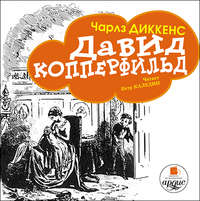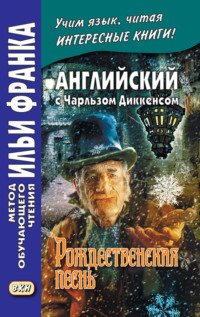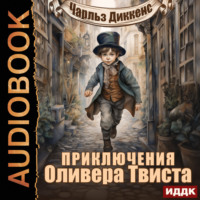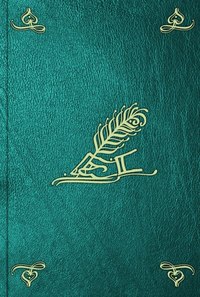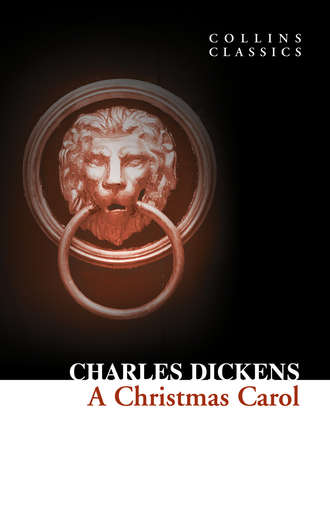
Полная версия
A Christmas Carol
‘These are but shadows of the things that have been,’ said the Ghost. ‘They have no consciousness of us.’
The jocund travellers came on; and as they came, Scrooge knew and named them every one. Why was he rejoiced beyond all bounds to see them! Why did his cold eye glisten, and his heart leap up as they went past! Why was he filled with gladness when he heard them give each other Merry Christmas, as they parted at crossroads and bye-ways, for their several homes! What was merry Christmas to Scrooge? Out upon merry Christmas! What good had it ever done to him?
‘The school is not quite deserted,’ said the Ghost. ‘A solitary child, neglected by his friends, is left there still.’
Scrooge said he knew it. And he sobbed.
They left the high-road, by a well remembered lane, and soon approached a mansion of dull red brick, with a little weathercock-surmounted cupola on the roof, and a bell hanging in it. It was a large house, but one of broken fortunes; for the spacious offices were little used, their walls were damp and mossy, their windows broken, and their gates decayed. Fowls clucked and strutted in the stables; and the coach-houses and sheds were overrun with grass. Nor was it more retentive of its ancient state, within; for entering the dreary hall, and glancing through the open doors of many rooms, they found them poorly furnished, cold, and vast. There was an earthy savour in the air, a chilly bareness in the place, which associated itself somehow with too much getting up by candlelight, and not too much to eat.
They went, the Ghost and Scrooge, across the hall, to a door at the back of the house. It opened before them, and disclosed a long, bare, melancholy room, made barer still by lines of plain deal forms and desks. At one of these a lonely boy was reading near a feeble fire; and Scrooge sat down upon a form, and wept to see his poor forgotten self as he had used to be.
Not a latent echo in the house, not a squeak and scuffle from the mice behind the panelling, not a drip from the half-thawed water-spout in the dull yard behind, not a sigh among the leafless boughs of one despondent poplar, not the idle swinging of an empty store-house door, no, not a clicking in the fire, but fell upon the heart of Scrooge with a softening influence, and gave a freer passage to his tears.
The Spirit touched him on the arm, and pointed to his younger self, intent upon his reading. Suddenly a man, in foreign garments: wonderfully real and distinct to look at: stood outside the window, with an axe stuck in his belt, and leading an ass laden with wood by the bridle.
‘Why, it’s Ali Baba!’ Scrooge exclaimed in ecstasy. ‘It’s dear old honest Ali Baba! Yes, yes, I know! One Christmas time, when yonder solitary child was left here all alone, he did come, for the first time, just like that. Poor boy! And Valentine,’ said Scrooge, ‘and his wild brother, Orson; there they go! And what’s his name, who was put down in his drawers, asleep, at the Gate of Damascus; don’t you see him! And the Sultan’s Groom turned upside-down by the Genii; there he is upon his head! Serve him right. I’m glad of it. What business had he to be married to the Princess!’
To hear Scrooge expending all the earnestness of his nature on such subjects, in a most extraordinary voice between laughing and crying; and to see his heightened and excited face; would have been a surprise to his business friends in the city, indeed.
‘There’s the Parrot!’ cried Scrooge. ‘Green body and yellow tail, with a thing like a lettuce growing out of the top of his head; there he is! Poor Robin Crusoe, he called him, when he came home again after sailing round the island. “Poor Robin Crusoe, where have you been, Robin Crusoe?” The man thought he was dreaming, but he wasn’t. It was the Parrot, you know. There goes Friday, running for his life to the little creek! Halloa! Hoop! Halloo!’
Then, with a rapidity of transition very foreign to his usual character, he said, in pity for his former self, ‘Poor boy!’ and cried again.
‘I wish,’ Scrooge muttered, putting his hand in his pocket, and looking about him, after drying his eyes with his cuff: ‘but it’s too late now.’
Конец ознакомительного фрагмента.
Текст предоставлен ООО «ЛитРес».
Прочитайте эту книгу целиком, купив полную легальную версию на ЛитРес.
Безопасно оплатить книгу можно банковской картой Visa, MasterCard, Maestro, со счета мобильного телефона, с платежного терминала, в салоне МТС или Связной, через PayPal, WebMoney, Яндекс.Деньги, QIWI Кошелек, бонусными картами или другим удобным Вам способом.

A Christmas Carol
History of Collins
In 1819, Millworker William Collins from Glasgow, Scotland, set up a company for printing and publishing pamphlets, sermons, hymn books and prayer books. That company was Collins and was to mark the birth of HarperCollins Publishers as we know it today. The long tradition of Collins dictionary publishing can be traced back to the first dictionary William published in 1824, Greek and English Lexicon. Indeed, from 1840 onwards, he began to produce illustrated dictionaries and even obtained a licence to print and publish the Bible.
Soon after, William published the first Collins novel, Ready Reckoner, however it was the time of the Long Depression, where harvests were poor, prices were high, potato crops had failed and violence was erupting in Europe. As a result, many factories across the country were forced to close down and William chose to retire in 1846, partly due to the hardships he was facing.
Aged 30, William’s son, William II took over the business. A keen humanitarian with a warm heart and a generous spirit, William II was truly ‘Victorian’ in his outlook. He introduced new, up-to-date steam presses and published affordable editions of Shakespeare’s works and Pilgrim’s Progress, making them available to the masses for the first time. A new demand for educational books meant that success came with the publication of travel books, scientific books, encyclopaedias and dictionaries. This demand to be educated led to the later publication of atlases and Collins also held the monopoly on scripture writing at the time.
In the 1860s Collins began to expand and diversify and the idea of ‘books for the millions’ was developed. Affordable editions of classical literature were published and in 1903 Collins introduced 10 titles in their Collins Handy Illustrated Pocket Novels. These proved so popular that a few years later this had increased to an output of 50 volumes, selling nearly half a million in their year of publication. In the same year, The Everyman’s Library was also instituted, with the idea of publishing an affordable library of the most important classical works, biographies, religious and philosophical treatments, plays, poems, travel and adventure. This series eclipsed all competition at the time and the introduction of paperback books in the 1950s helped to open that market and marked a high point in the industry.
HarperCollins is and has always been a champion of the classics and the current Collins Classics series follows in this tradition – publishing classical literature that is affordable and available to all. Beautifully packaged, highly collectible and intended to be reread and enjoyed at every opportunity.
Life & Times
About the Author
Charles Dickens was born in Portsmouth, England, but had moved to Kent and then to London by the time he was ten years of age. Not long afterwards, his father was arrested and sent to debtors prison for spending beyond his means. This marked a transition in Dickens’ early life from one of carefree childhood to one filled with relative uncertainty. Above all, Dickens began to ferment ideas of social injustice and a need for social reform in pre-Victorian Britain. These ideas would become the staple of his literary cannon.
He was first published in 1833 at the age of 21. By the time of his death, in 1870, he had completed nineteen (and a half) novels. His final work, The Mystery of Edwin Drood, was only half completed. All of Dickens novels were first published in serialized form, which was the orthodox method in his day.
While other writers tended to complete their books first and then divide them into chapters for serialization, Dickens preferred to write his chapters as and when required. This lent itself to his success, because it meant that his prose was naturally tailored to the format of monthly instalments. Rather than having hiatuses randomly placed in the overall storyline, according to page counts, Dickens was able to deliberately leave the reader wanting more. In essence he had invented the concept of the literary cliff-hanger. Combined with his enhanced characterizations and fabulist allegory this made for a compelling read, so Dickens became the single most popular author in Victorian Britain.
By his forties, Dickens had taken to touring and giving animated readings of his books to captive audiences, who delighted in his ability to bring his characters to life. This was an extension of the storytelling craft he had learnt as a parent, as he had ten children with his wife Catherine, whom he married in 1836.
As well as being a humanistic novelist, Dickens was also a humanitarian in real life. For example, he gave his support to the abolition of slavery in the USA and helped to establish a home of the redemption for ‘fallen’ women in England, which meant those women who had resorted to crime and prostitution to find their way in life, but had ended up in debtors’ prisons, common prisons or workhouses.
A hostel named Urania Cottage was established in London, where these women were given a second chance. They were clothed and fed, provided with education and taught the skills to be able to find domestic employment.
Needless to say, Dickens rubbed shoulders with many extreme characters due to his work with the ‘fallen’ in society. Due to his celebrity, he also met many people at the other end of the spectrum, so there was no shortage of people upon whom to base his fictitious characters.
In 1865 Dickens was involved in a rail crash at Staplehurst, Kent, in which ten people died and many more were injured. Dickens was not hurt but his efforts to help the injured and dying left him with post traumatic stress disorder for the remaining five years of his life. On that fateful day he had been travelling with his lover, Ellen Ternan. Dickens had separated from his wife in 1858 when Catherine found out about his affair with the younger woman, who was 18 years his junior. He managed to keep Ellen a secret from society by never appearing in public with her and keeping her hidden in houses rented under false names. He knew very well that Victorian society would not have held a favourable view of his domestic arrangements. His infidelity would have caused an absolute scandal, especially as he was viewed as a highly virtuous and moralistic man. Falling in love with another was simply not acceptable behaviour, especially as Queen Victoria had remained steadfastly loyal to the memory of her beloved Prince Albert since his demise in 1861 and would continue to do so until her own death in 1901.
Dickens died of a stroke exactly five years following the rail crash at the age of 58 years old. He wished to be buried in a modest and private manner, but his funeral was a rather grand affair at Westminster Abbey.
The Victorian Era
The work of Charles Dickens is rather unusual in that it has become something of a social document of the Victorian era in Britain. That is because his books are a primary point of reference to anyone wondering about what it was like to have lived at that time. Consequently, Dickens’ imagined Victorian world is largely perceived by many as a real world, filled with exaggerated characters in extreme circumstances. The result is an odd set of paradoxes. For example, the Victorians are generally understood to have been austere and pious in the extreme, but the truth is that they lived in a highly progressive society where people were pushing the boundaries of behaviour and questioning the role of religion.
Dickens’ version of Victorian society came from his requirement for idiosyncratic characters to make his stories work more effectively in evoking emotional responses in the reader. It is fair to assume that they were based on the personalities of people he had met, so there was an element of truth, but Dickens’ boiled them down to amplify the traits he was most interested in and remove the traits superfluous to literary requirements. In effect, Dickens’ Victorian world is a cartoon, where the more mundane, mediocre and prosaic details serve only as a neutral backdrop, while the colourful characters are allowed to distract the attention.
It can be no coincidence that Dickens himself was an accomplished performer. He was the William Shakespeare of the Victorian age, both writing and taking to the stage as a storyteller. This makes it easy to understand why his characters had such pronounced identities, because Dickens would mentally assume different roles whilst story telling, both on paper and when treading the boards.
As any parent or teacher will attest, it is quite necessary to exaggerate characters with gestures and voices while story telling to capture the imagination of the audience and leave no confusion about who is who. This is exactly what Dickens was doing, so that his version of the Victorian world became one of overblown polarity: villains and do-gooders, the devout and the morally fallen, the wealthy and the poor, the beautiful and the ugly, the selfish and the selfless. Those who fall ‘somewhere between’ truly are the silent majority in Dickensian Britain.

A Christmas Carol
History of Collins
In 1819, Millworker William Collins from Glasgow, Scotland, set up a company for printing and publishing pamphlets, sermons, hymn books and prayer books. That company was Collins and was to mark the birth of HarperCollins Publishers as we know it today. The long tradition of Collins dictionary publishing can be traced back to the first dictionary William published in 1824, Greek and English Lexicon. Indeed, from 1840 onwards, he began to produce illustrated dictionaries and even obtained a licence to print and publish the Bible.
Soon after, William published the first Collins novel, Ready Reckoner, however it was the time of the Long Depression, where harvests were poor, prices were high, potato crops had failed and violence was erupting in Europe. As a result, many factories across the country were forced to close down and William chose to retire in 1846, partly due to the hardships he was facing.
Aged 30, William’s son, William II took over the business. A keen humanitarian with a warm heart and a generous spirit, William II was truly ‘Victorian’ in his outlook. He introduced new, up-to-date steam presses and published affordable editions of Shakespeare’s works and Pilgrim’s Progress, making them available to the masses for the first time. A new demand for educational books meant that success came with the publication of travel books, scientific books, encyclopaedias and dictionaries. This demand to be educated led to the later publication of atlases and Collins also held the monopoly on scripture writing at the time.
In the 1860s Collins began to expand and diversify and the idea of ‘books for the millions’ was developed. Affordable editions of classical literature were published and in 1903 Collins introduced 10 titles in their Collins Handy Illustrated Pocket Novels. These proved so popular that a few years later this had increased to an output of 50 volumes, selling nearly half a million in their year of publication. In the same year, The Everyman’s Library was also instituted, with the idea of publishing an affordable library of the most important classical works, biographies, religious and philosophical treatments, plays, poems, travel and adventure. This series eclipsed all competition at the time and the introduction of paperback books in the 1950s helped to open that market and marked a high point in the industry.
HarperCollins is and has always been a champion of the classics and the current Collins Classics series follows in this tradition – publishing classical literature that is affordable and available to all. Beautifully packaged, highly collectible and intended to be reread and enjoyed at every opportunity.
Life & Times
About the Author
Charles Dickens was born in Portsmouth, England, but had moved to Kent and then to London by the time he was ten years of age. Not long afterwards, his father was arrested and sent to debtors prison for spending beyond his means. This marked a transition in Dickens’ early life from one of carefree childhood to one filled with relative uncertainty. Above all, Dickens began to ferment ideas of social injustice and a need for social reform in pre-Victorian Britain. These ideas would become the staple of his literary cannon.
He was first published in 1833 at the age of 21. By the time of his death, in 1870, he had completed nineteen (and a half) novels. His final work, The Mystery of Edwin Drood, was only half completed. All of Dickens novels were first published in serialized form, which was the orthodox method in his day.
While other writers tended to complete their books first and then divide them into chapters for serialization, Dickens preferred to write his chapters as and when required. This lent itself to his success, because it meant that his prose was naturally tailored to the format of monthly instalments. Rather than having hiatuses randomly placed in the overall storyline, according to page counts, Dickens was able to deliberately leave the reader wanting more. In essence he had invented the concept of the literary cliff-hanger. Combined with his enhanced characterizations and fabulist allegory this made for a compelling read, so Dickens became the single most popular author in Victorian Britain.
By his forties, Dickens had taken to touring and giving animated readings of his books to captive audiences, who delighted in his ability to bring his characters to life. This was an extension of the storytelling craft he had learnt as a parent, as he had ten children with his wife Catherine, whom he married in 1836.
As well as being a humanistic novelist, Dickens was also a humanitarian in real life. For example, he gave his support to the abolition of slavery in the USA and helped to establish a home of the redemption for ‘fallen’ women in England, which meant those women who had resorted to crime and prostitution to find their way in life, but had ended up in debtors’ prisons, common prisons or workhouses.
A hostel named Urania Cottage was established in London, where these women were given a second chance. They were clothed and fed, provided with education and taught the skills to be able to find domestic employment.
Needless to say, Dickens rubbed shoulders with many extreme characters due to his work with the ‘fallen’ in society. Due to his celebrity, he also met many people at the other end of the spectrum, so there was no shortage of people upon whom to base his fictitious characters.
In 1865 Dickens was involved in a rail crash at Staplehurst, Kent, in which ten people died and many more were injured. Dickens was not hurt but his efforts to help the injured and dying left him with post traumatic stress disorder for the remaining five years of his life. On that fateful day he had been travelling with his lover, Ellen Ternan. Dickens had separated from his wife in 1858 when Catherine found out about his affair with the younger woman, who was 18 years his junior. He managed to keep Ellen a secret from society by never appearing in public with her and keeping her hidden in houses rented under false names. He knew very well that Victorian society would not have held a favourable view of his domestic arrangements. His infidelity would have caused an absolute scandal, especially as he was viewed as a highly virtuous and moralistic man. Falling in love with another was simply not acceptable behaviour, especially as Queen Victoria had remained steadfastly loyal to the memory of her beloved Prince Albert since his demise in 1861 and would continue to do so until her own death in 1901.
Dickens died of a stroke exactly five years following the rail crash at the age of 58 years old. He wished to be buried in a modest and private manner, but his funeral was a rather grand affair at Westminster Abbey.
The Victorian Era
The work of Charles Dickens is rather unusual in that it has become something of a social document of the Victorian era in Britain. That is because his books are a primary point of reference to anyone wondering about what it was like to have lived at that time. Consequently, Dickens’ imagined Victorian world is largely perceived by many as a real world, filled with exaggerated characters in extreme circumstances. The result is an odd set of paradoxes. For example, the Victorians are generally understood to have been austere and pious in the extreme, but the truth is that they lived in a highly progressive society where people were pushing the boundaries of behaviour and questioning the role of religion.
Dickens’ version of Victorian society came from his requirement for idiosyncratic characters to make his stories work more effectively in evoking emotional responses in the reader. It is fair to assume that they were based on the personalities of people he had met, so there was an element of truth, but Dickens’ boiled them down to amplify the traits he was most interested in and remove the traits superfluous to literary requirements. In effect, Dickens’ Victorian world is a cartoon, where the more mundane, mediocre and prosaic details serve only as a neutral backdrop, while the colourful characters are allowed to distract the attention.
It can be no coincidence that Dickens himself was an accomplished performer. He was the William Shakespeare of the Victorian age, both writing and taking to the stage as a storyteller. This makes it easy to understand why his characters had such pronounced identities, because Dickens would mentally assume different roles whilst story telling, both on paper and when treading the boards.




